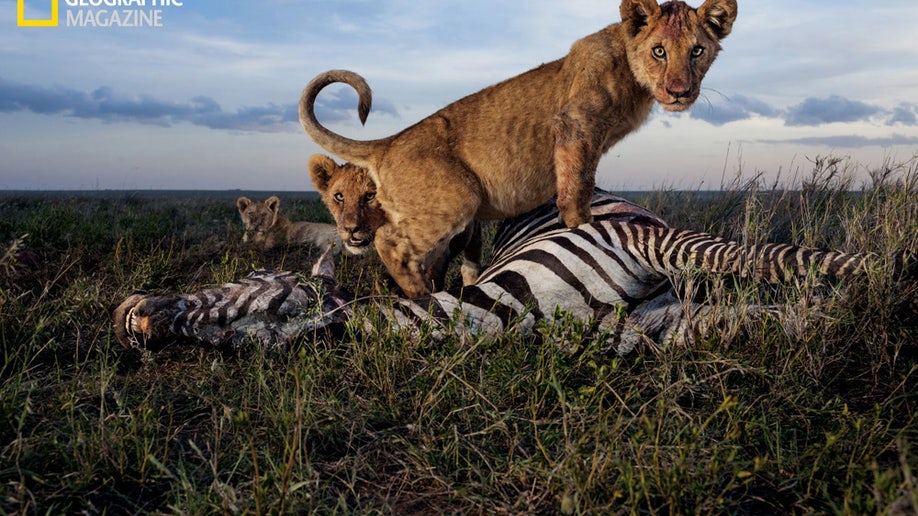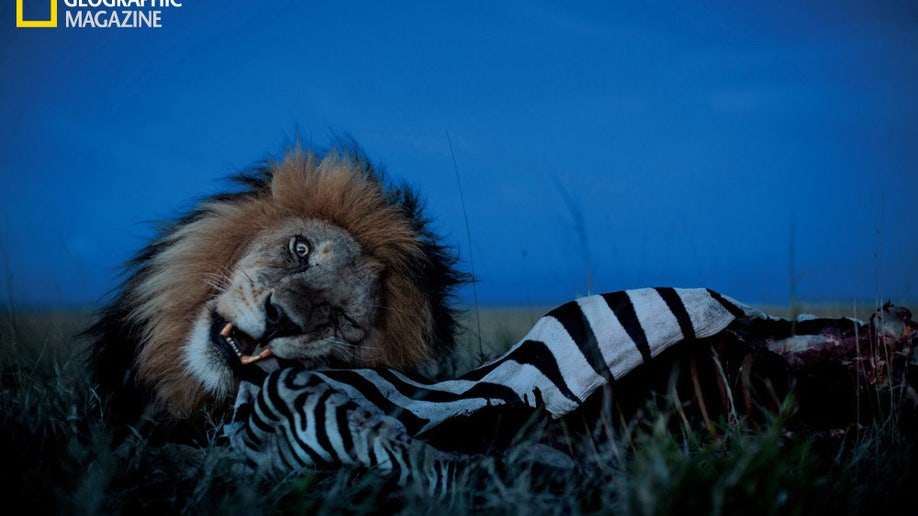Incredible lions: Intimate pictures of the king of the jungle
{{#rendered}} {{/rendered}}
Cubs of the Simba East pride: too young to kill but old enough to crave meat. Adult females, and sometimes males, do the hunting. Zebras and wildebeests rank high as chosen prey in the rainy season. (Michael Nichols/National Geographic)

A male often asserts his prerogatives. C-Boy feasts on a zebra while the Vumbi females and cubs wait nearby, warned off by his low growls. Their turn will come. (Michael Nichols/National Geographic)
Dry season is hard on everyone. Vumbi females, stressed and fiercely protective of their young, get cross with C-Boy, though heâs one of the resident fathers. (Michael Nichols/National Geographic)
C-Boy and a Vumbi female relax between matings. During estrus a female may be monopolized for days by a single male consort. Dark manes correlate with robustness, and dark-maned studs like C-Boy are preferred. (Michael Nichols/National Geographic)
Large cubs of the Vumbi pride and a grown female (fifth from left) feast on a wildebeest. The darkest, moonless hours are prime hunting time because the cats can see better than their prey. These black-and-white photographs were made with infrared light to minimize disruption to the lions. (Michael Nichols/National Geographic)
A female wrangles her infant cubs. During the first few weeks, when theyâre too young for the competitive jumble among older cubs in the pride and so vulnerable to predators, she keeps them hidden away in a den. But these will soon join the group. (Michael Nichols/National Geographic)
The Vumbi femalesâtheir pride name is Swahili for âdustââkill a warthog theyâve dragged from its burrow. Such small meals help bridge the lean, hungry, dry season, when cubs may otherwise starve. (Michael Nichols/National Geographic)
The Vumbis rest on a kopje, or rocky outcrop, near a favorite water hole. Lions use kopjes as havens and outlooks on the plains. When the rains bring green grass, wildebeests arrive in vast herds. (Michael Nichols/National Geographic)
(National Geographic)
